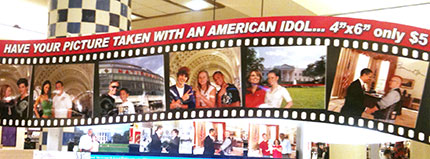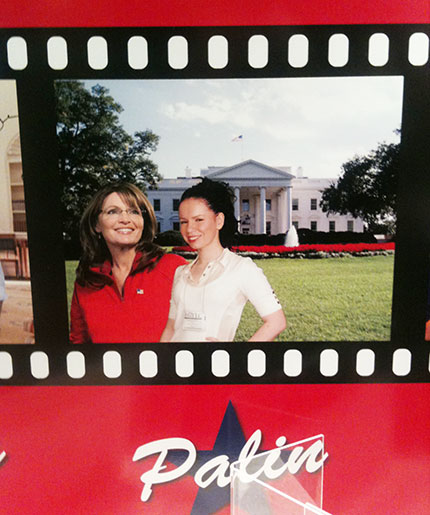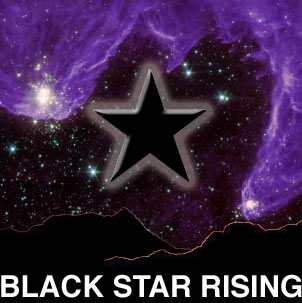Often what it comes down to when calling a prospective client is the introduction. Suppose, for example, you want to call Jason Adams* at Spin magazine to shoot portraits for them. Your objective is to engage him with your creative talents, right? Wrong. Your objective is to get his permission to send an email to him with a few images, and a link to your website. How do you do this? Well, break down your call into what happens.
First - find out his direct dial number. How do you do that? Well, first things first - what's the main number? A Google search for "Spin Magazine" turns up this - and once there, they conveniently have a "masthead" link - here. Their direct dial number turns out to be 212-231-7400. That'll get you to the receptionist. You can first call that number and say "Hi, can you please tell me the direct dial number for Jason Adams?", and maybe you'll get lucky. If they say "oh, we don't give those out...but I'll connect you..." say "no thank you, not right now" and hang up. You can also ask what his extension number is, and they may give you that. You can also call after hours, select the company directory, and enter Jason's name, and often that automated system will say "connecting you to extension 312, please wait while I connect you", and now you have somewhere to begin.
So, you now now that Jason's extension is 312. That'll get you to him when you dial the main number after hours, and key in his extension, or when you're in their lobby, and want to stalk Jason from the phone on the side table. Don't do that. The next resource is the jobs, PR, or advertising sections of the website. Unlike all the other sections of the website designed to keep the hundreds of thousands of readers from bugging the staff, the advertising department (and thus, that section of their website) is chock full of contact information and direct dial information. So too, the PR section. So, let's delve a little deeper, shall we?
(Continued after the Jump)
The "contact" section of the advertising section of the website (here) lists all sorts of emails and direct dials that were missing from the main "contact us" section of the site - here! Surprise Surprise!
In the ad section, we learn that while the main # is still 212-231-7400, the publisher's direct dial number (obviously, to his secretary!) is 212-231-7302. We also learn that one of the account managers there has the direct dial number 212-231-7355. Other people listed on this page have the suffix of the phone number 7421, 7426, 7450, 7440, 7470. So, it seems, Spin owns the 7300 and the 7400 exchanges for the 231 prefix, of the 212 area code. So, Jason's direct dial number is most likely 212-231-7312. Bingo! Now, don't dial it just yet, TEST it during off hours. Say, around 10:30 at night, call the number and see if it's Jason's voicemail. Be careful, in today's day and age, many people are forwarding their work numbers to their mobiles, so if he answers, apologize for the wrong number, and hang up! You're not ready to actually talk to Jason yet!
Now, you need to learn Jason's email address. Why? Because you don't want to ASK him for it - you should be saavy enough to have figured it out BEFORE you talk to Jason. Do some more research. Often, as before, the advertising, PR, and Human Resources section of the site has peoples' email addresses. BUT WAIT! You shout, I don't want a job - I want to do a shoot for them! Patience there, friend. heading back to the advertising URL - here - we see that the publisher's email - Malcolm Campbell is mcampbell@spin.com, and the Fashion Director - Kelly Rae is krae@spin.com. Seeing a pattern there? That's right - Jason's email is likely first initial then last name, @spin.com. In other places, it's firstname.lastname@company.com, and then it can be lastname_firstinitial@company.com. In other words, learn the email nomenclature. Now, be careful, because if the person's name is John Smith, there may be more than one "JSmith@company.com", so it'll either be first two letters of the first name then the last name, or it could be jsmith2@company.com. It can get a little tricky there. You an also try doing a search for his email address "jadams@spin.com" and see if it comes up.
Ok, now that you have the contact information, head to the website, or the local bookstore and check out what they're doing now. DO NOT call and offer them something you do that they don't! See what they're doing and think about if you are a good fit or not, and be honest - don't waste there time or yours. If you're spending all your time doing this research, I am assuming you've already been pining about how your work is just as great as what they are running, or better, and you could do that too, so that's why you're doing this research, but, really, be honest!
So, say, you see a great portrait of Fat Joe and Jay-Z in the magazine, and you light your stuff like that, but it says in the credit "Photographed on location in Jay-Z's Atlanta studio, August 12, 2010." And, say, you're a detroit photographer, and the car executives aren't calling these days for updated portraits. So, prepare your pitch. You have 20 seconds. Write it down. Refine it. It might go something like this:"Hi Jason, I hope I'm not catching you at a bad time, but I wanted to just call and get your permission to send you an email promo. I hate spam, and I didn't want you to think I was spamming you, but I saw that amazing portrait the magazine ran of Fat Joe and Jay-Z, and I work in the Detroit area and wanted to share with you some of my work if that's ok?"
When Jason says "sure, no problem". You can either say "thanks, I'll send it right along", or say "I have your email as JAdams@spin.com, is that correct?" Either way, don't ASK for it, but you could confirm it's right.
There are a dozen ways you can script your call, but the key is to script it, and read it a dozen times to yourself to ensure it's smooth, and you don't stumble, and you sound natural. My first read of that script took 15 seconds. Some might dissect that and say the "I hate spam..." sentence fragment is negative, and should be avoided, but the positive side of that is you're trying to point out that you don't want to spam him. The point is - think, and then re-think your pitch on the phone.
When he says "sure", send it right along - as in, within 5 minutes or so. Don't call first thing in the morning, or at the end of the day. Right before lunch time (remember time zones changes from yours!) or midday - between 2 and 3:30.
Don't leave messages. If he doesn't answer, call back 20-30 minutes later. Don't call right before an "on the hour" or "on the half-hour" time, because he's likely headed to a meeting. So, call between the :10~:20, or the :40~:50 time windows.
How many times does Jason need to experience your name/offering before being ready to do business with you? Nine times. The problem is - for every three times you do put your name/offering infront of him, he's actually only paying attention once. Yup. Don't believe me? Check this link for more insights, and then go buy it as it's a book I highly recommend - Guerrilla Marketing. So, you've just done it twice, and maybe he'll remember it once. You've now got 8 more conscious experiences for Jason to have with your work before he's ready to work with you. Maybe less, if you're really all that you think you are.
So, you've just done it twice, and maybe he'll remember it once. You've now got 8 more conscious experiences for Jason to have with your work before he's ready to work with you. Maybe less, if you're really all that you think you are.
What else could you do? Well, you could look up Jason on Facebook and LinkedIn, to see if you can learn more about him. Read his wall postings, and really get to know Jason. Yes, I know you might think this is stalking, but, in reality, it's called gathering business intelligence about your prospective clients, so they become your clients. Once you get to know Jason, you'll want to note in your smart phone things like his favorite drink(s), birthday, kids names, spouse's name, the neighborhood where he lives, where he grew up, and so on. Again, this isn't stalking, it's getting to know more about your client, over time, and then not forgetting that he's, say, an alcoholic, so you don't send him a nice bottle of wine for the holidays. Or, knowing that he's jewish, and would likely take offense at your "Christmas" gift. The above personal client "data" are things you learn from them, over time, whether they share that information with you directly, or post about it on their facebook account - i.e. publically! Either way, be careful how you use the information, as it could come across as really creepy. For example, if you say "hey, my kid just joined Babe Ruth baseball, does your son Timmy like it?" And when Jason says "how do you know my son Timmy plays Babe Ruth?!?!" You can say "oh, I remembered you posted on facebook about the game..." - be honest wherever possible.
You could, of course, get all sorts of contact information from Agency Access, or AdBase. Back in July of 2008 we wrote Getting Clients - A Few Options, and in November of 2008 we wrote Marketing 201: AdBase - A Timesaving and Valuable Tool, which does a lot of the initial research for you, for a fee, of course.
next up? What to write in that email!
----------
(* Jason Adams, by the way, is a made-up name. He's fictional. I have no idea of there ever was a Jason Adams at Spin, but, you get the point.)
Please post your comments by clicking the link below. If you've got questions, please pose them in our Photo Business Forum Flickr Group Discussion Threads.
[More: Full Post and Comments]







